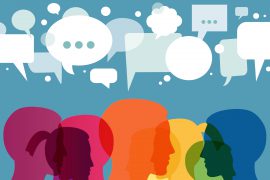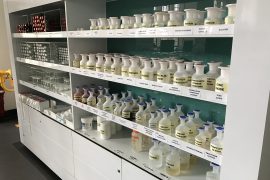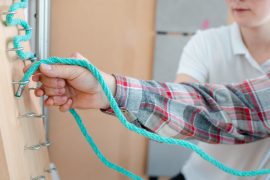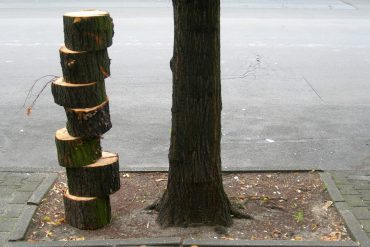Science has much to learn from sport when it comes to accessibility of participation. The Paralympics, just opened in Paris, is currently showcasing the incredible sporting careers of disabled athletes from around the world. In science, there still exist many barriers to participation for students with disabilities, which leads to reduced numbers of disabled people reaching their full potential in science careers. Our project in the School of Chemistry has set out to remove barriers to participation in science and science careers for blind and low vision students.
Chemistry is generally considered a difficult subject, due to its complexity and the need to imagine sub-micro sized entities and processes. It is also considered a highly visual science, which may contribute to the low numbers of blind or low vision student enrolment. Among students who decide to study chemistry, enjoyment of laboratory work is a crucial factor. For blind students, however, laboratory work is particularly challenging with instructors often falling short of providing meaningful adaptations for blind and low vision students. Current laboratory approaches often involve partnering blind students with a sighted demonstrator, and though there are benefits to this approach, typically the demonstrator completes parts of the experiment that require observation or handling of chemicals or equipment, therefore unintentionally demonstrating to blind or low vision students that they are unable to complete their experiments independently.
Our project aims to change this: it is unique, in that is aims to develop a completely accessible laboratory program for blind or vision impaired students that is ready to roll-out for any students who enrol, rather than making all accommodations after enrolment. We hope that once realised, our project will ensure that blind and low vision students know that tertiary studies in chemistry are possible, enhancing student self-confidence through empowerment to conduct independent laboratory work.
Talking technology
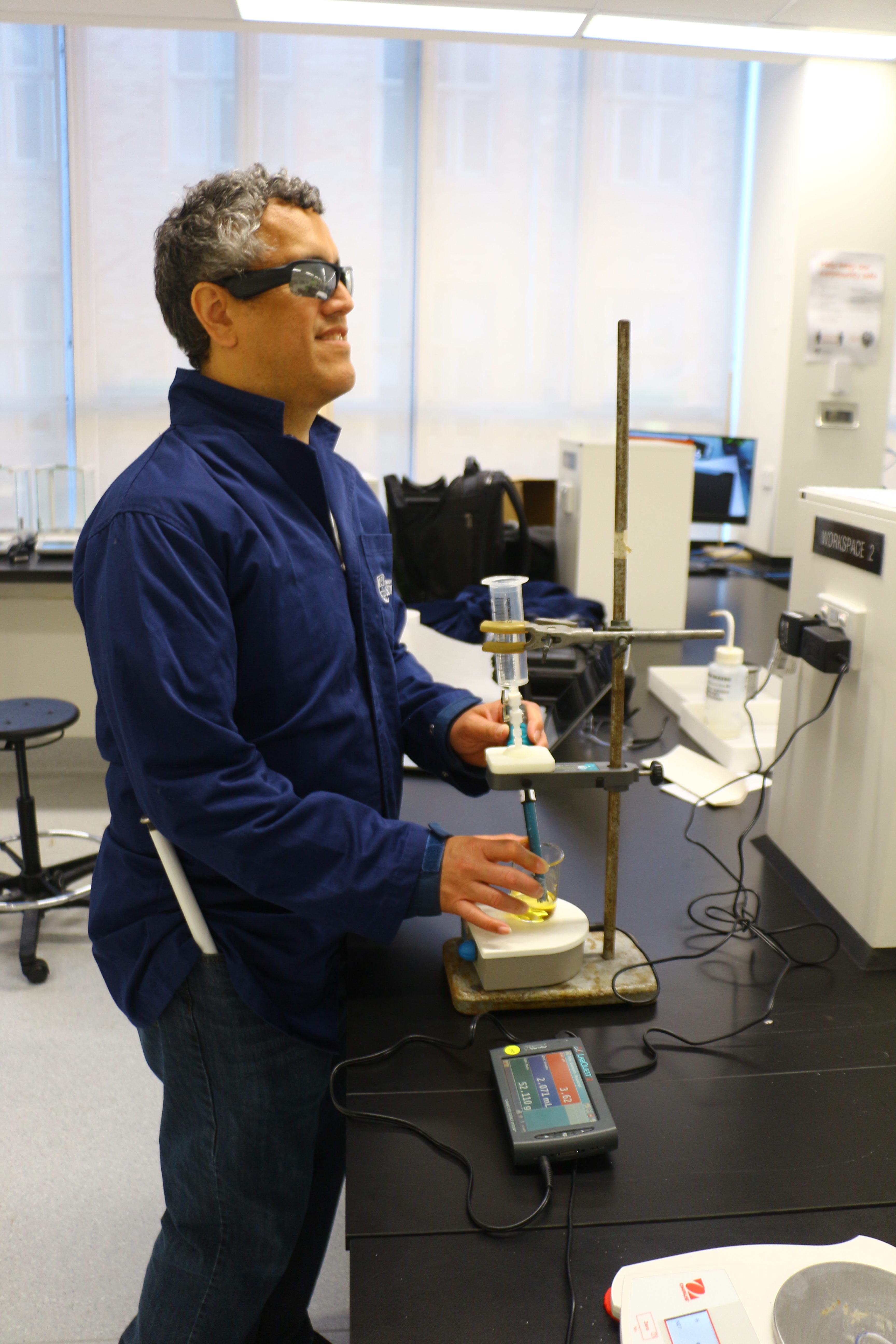
We have partnered with a blind colleague, Dr Cary Supalo, who is both a collaborator and the inspiration for this project. He earned his PhD from Pennsylvania State University in 2010 in the field of chemistry education, following completion of a Master of Science in inorganic chemistry at the same institution in 2005. Cary’s undergraduate studies at Purdue University led to a dual degree major in chemistry and communications. Since completing his PhD, Cary has developed talking access technology, which is distributed through Independence Science in form of the Sci-VoiceTM Talking LabQuest2. In a first visit to the University of Sydney, the project team reviewed all 1st year chemistry laboratory experiments and developed a list of recommendations for adaptations to the standard experimental procedures, such that they could be attempted by blind students independently (still supported by a trained chemistry laboratory demonstrator, as for all students in the cohort).
Thanks to funding support from the School of Chemistry, the Royal Society of Chemistry and recently a University of Sydney Strategic Education Grant, we have been able to put these experiments to the test. Cary and Ms Jasodhara Bhattacharya, who is an Accessibility Specialist at Independence Science (Indiana, USA) have been able to visit the School of Chemistry as part of the project earlier this year.
In first-year chemistry in 2024, students need to complete four experiments and four accompanying ‘labtorials’ to meet the practical requirements for their first semester of chemistry. The complete set of these experiments were adapted to be suitable for independent inquiry by blind and low vision students and then tested in a week of intensive experimentation earlier this year, with further refinements made along the way.
Students as Partners
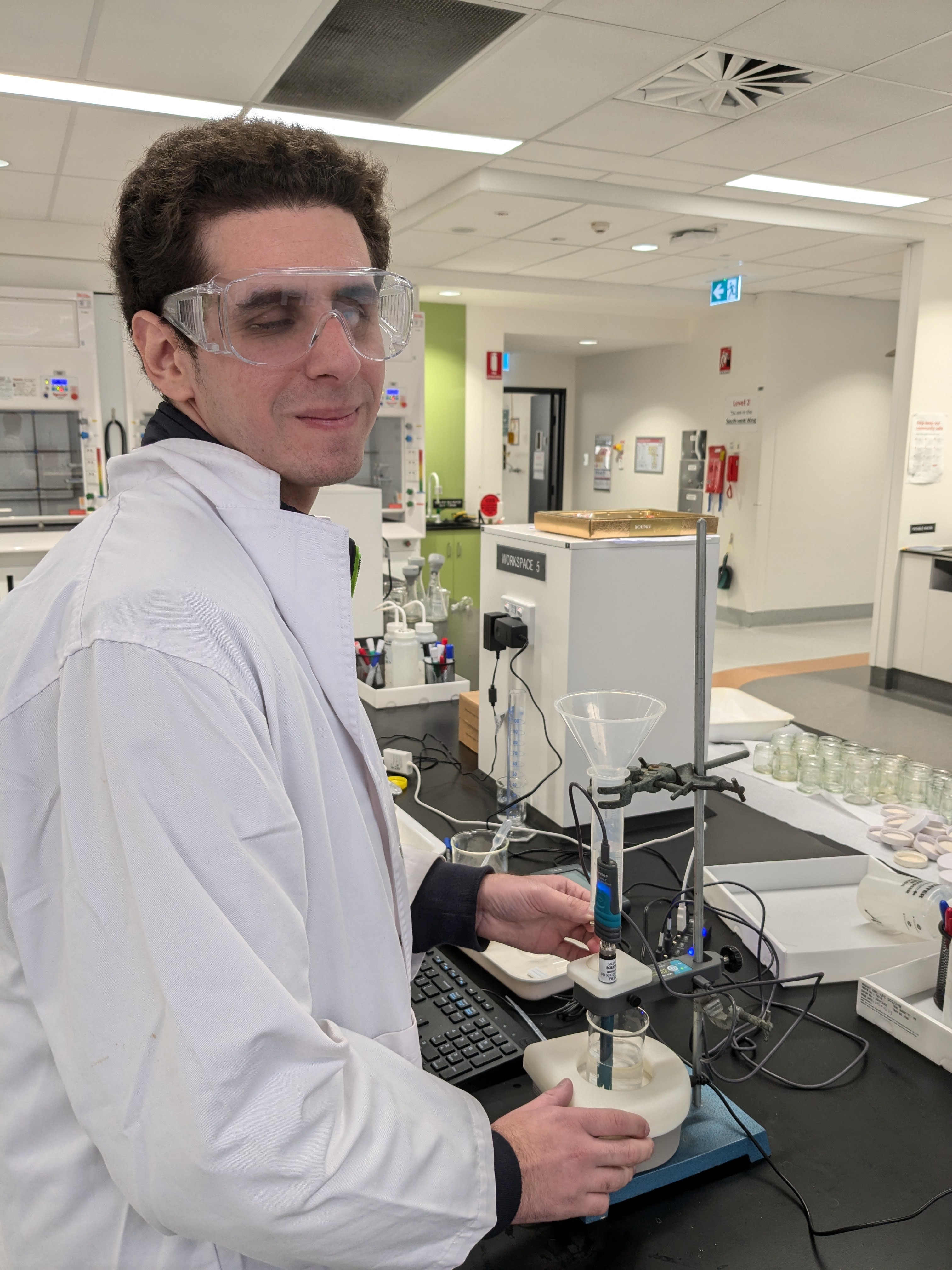
Following further refinement of the procedures and instrumentation, we were fortunate enough to collaborate with Mr Theodore Tsolakis as a student partner for further proof-of-concept testing. Theodore studies Law at Sydney and has little background in science, chiefly due to the fact that without blind role models he “… believed that the capacity of blind people to meaningfully participate in STEM was limited and did not give it serious consideration…”. Despite not having done much chemistry previously, Theodore found the experiments manageable, albeit challenging at times. He was particularly complimentary of the many adaptations that were developed as part of this project. In his words,
“These adaptations will enable people who are blind or have low vision to be more fully included in chemistry labs. Being able to perform experiments independently will inspire blind students with the confidence and motivation to explore a subject they might have previously thought was off-limits to them.”
What’s next?
We have now established the complete set of experiments for the first semester of chemistry at Sydney and are in the process of producing the detailed experimental procedures and documentation for students, demonstrators and professional and academic staff members.
This project is specifically designed to establish equity and inclusion in learning and assessment for students who are blind or low vision. The accessible design of experiments will also help other students, e.g. those who are neurodiverse. In addition, we hope that broadening laboratory access will lead to a more inclusive society as sighted students gain greater awareness of the capabilities and expertise of people with disability.
Discussions and presentations of this project at the Inclusion in Science Learning a New Direction (ISLAND) conference have created interest in this project, resulting in a commentary that was published in Nature Reviews Chemistry, and a full page spread in the most widely used 1st year Australian Chemistry textbook. With further dissemination of our progress and developments, we hope that we can encourage blind students to follow their dreams in STEM and ensure that their learning can be enjoyable, engaging and enable independence.
Lessons learned
- In line with the motto ‘Nothing About Us, Without Us’, it is essential to collaborate with people who are part of the community for who the barriers for participation exist.
- Using our imagination to consider different ways of doing things has been key. We are often set in a particular way of teaching, instructing, experimenting and learning but of course all of these things can be changed and unlocking this creativity to think differently has been fun.
- We are always learning and open to improving all aspects of our project and would love to learn from others. If you have any ideas/advice or would like some from us, please get in touch.
The project team
- Prof. Siegbert Schmid (Project Co-Lead, School of Chemistry)
- Dr Cary Supalo (blind chemist; Educational Testing Service, NJ, USA; Hon. Prof. School of Chemistry)
- Ms Jasodhara Bhattacharya (Accessibility Specialist, Independence Science, IN, USA)
- A/Prof. Alice Motion (Project Co-Lead, School of Chemistry)
- Prof. Peter Rutledge (Head of School, School of Chemistry)
- Dr Shane Wilkinson (1st Year Laboratory Director, School of Chemistry)
- Dr Anthony Katselas (Research Officer and Technology Developer)
- Mr Theodore Tsolakis (Student Partner)


